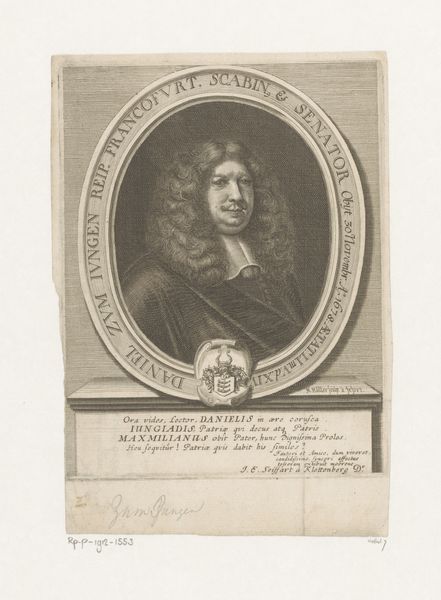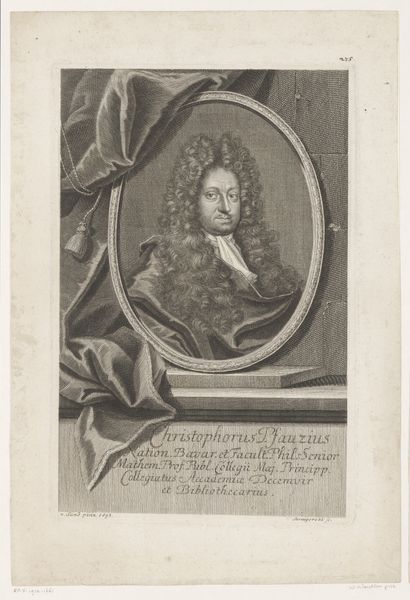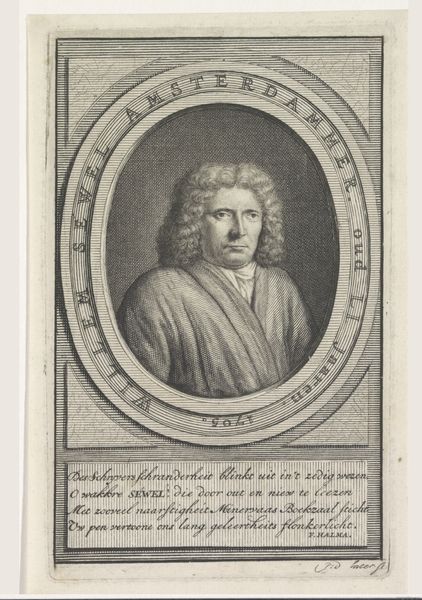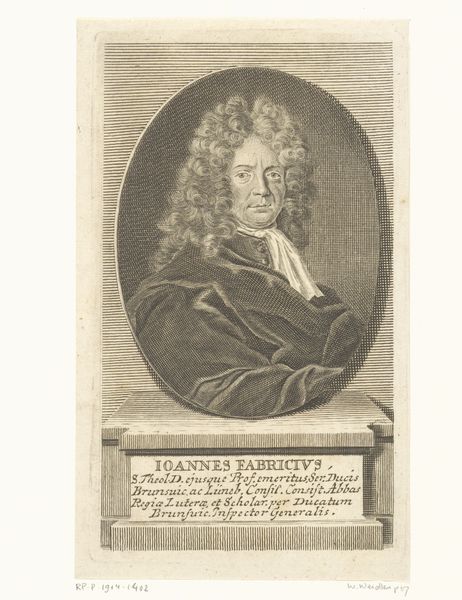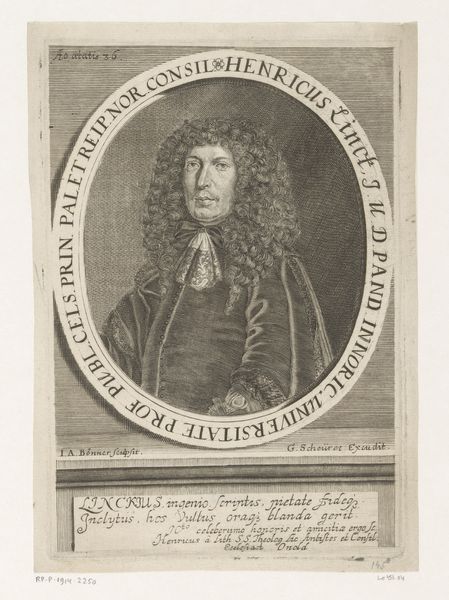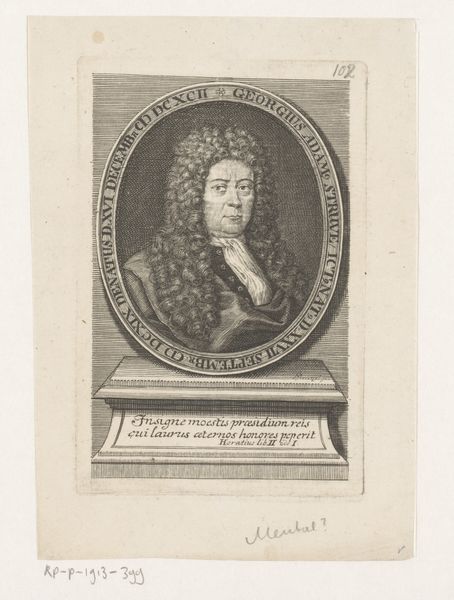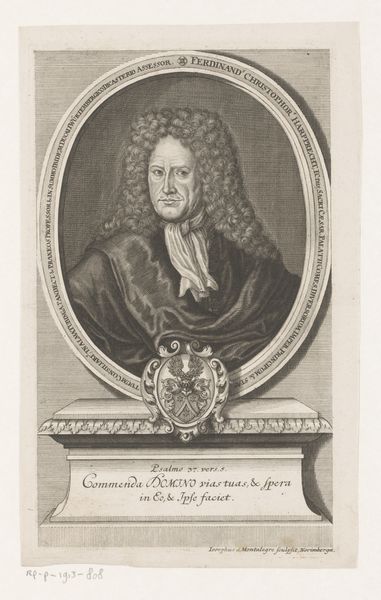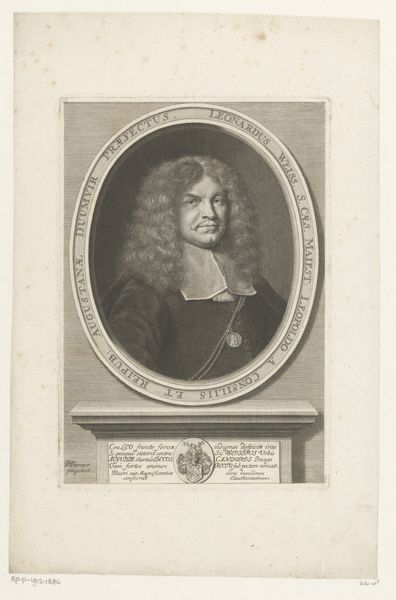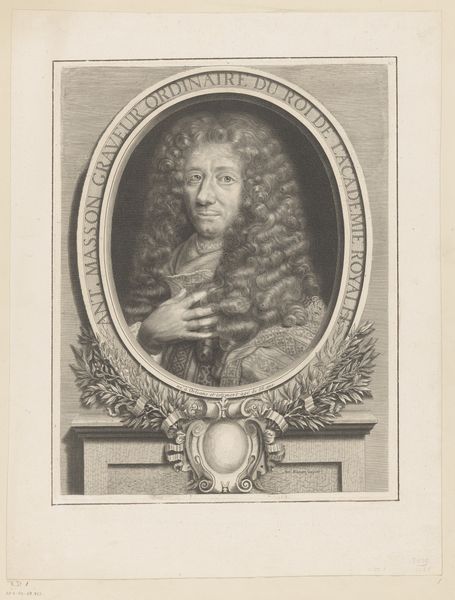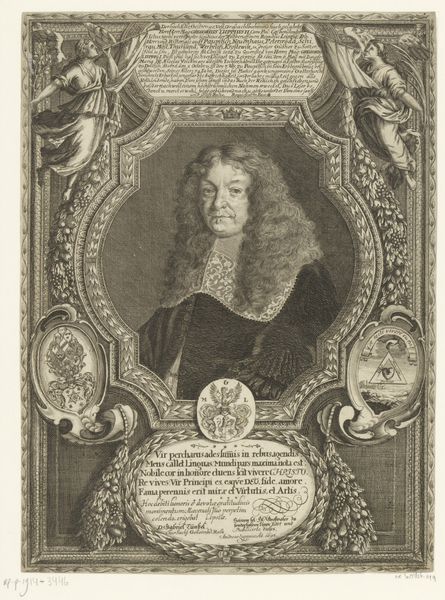
print, engraving
#
portrait
#
baroque
# print
#
old engraving style
#
figuration
#
history-painting
#
engraving
Dimensions: height 259 mm, width 191 mm
Copyright: Rijks Museum: Open Domain
This print of Jean Baptiste Poquelin Molière was made in the late 17th or early 18th century by Nicolas Habert. It is an etching on paper, a technique that involves drawing an image into a wax ground on a metal plate, then immersing the plate in acid. The acid bites away the exposed lines, which are then inked and printed. The dense network of lines in this print shows the skill involved in controlling the etching process. Notice how the varying depths and densities of the lines create subtle tonal variations, giving shape to Molière's face and clothing. The formal composition, with its emphasis on line and detail, reflects the prevailing aesthetic of the time, while the printed format suggests the rise of a broader market for images. The labor-intensive nature of etching, involving careful planning and execution, contrasts with the mass-produced quality of the final print. This tension between handcraft and industrial production is central to understanding the social context of this image, which brings the world of the theatre directly into the hands of viewers. By appreciating these aspects, we can understand the full meaning of this artwork, challenging traditional distinctions between fine art and craft.
Comments
No comments
Be the first to comment and join the conversation on the ultimate creative platform.
